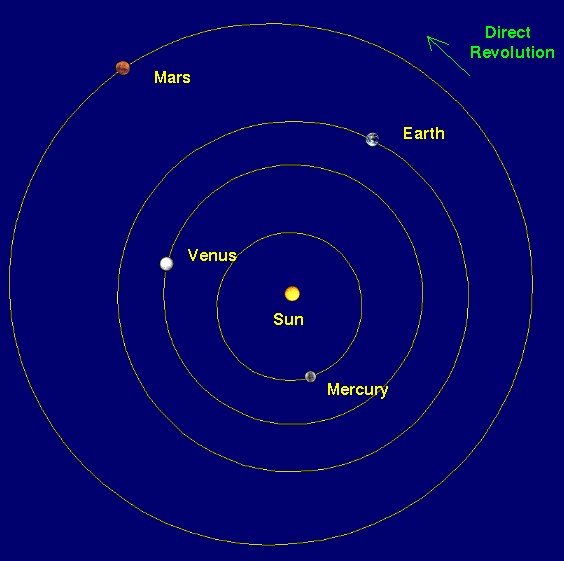 |
| The inner Solar System to scale, Fall, 1996 |
As discovered by Kepler, the planets orbit on ellipses with the Sun at one focus. In addition, the planets all revolve in the same direction on their orbits (direct orbital motion). Let's now consider the orbits of the planets in more detail.
 |
| The inner Solar System to scale, Fall, 1996 |
The sizes and shapes of the orbits are realistic, as is the relative positions of the planets for the date in the Fall, 1996, when the plot was constructed. The sizes of the planetary symbols are not to scale; the planets would be too small to see at this scale as more than dots of light. Notice the eccentricity of the orbits for Mercury and, to a lesser degree, Mars. From this perspective (which corresponds to looking down on the Northern hemisphere of the Earth), the planets all revolve in a counter-clockwise sense, as indicated by the arrow.
Here are the present positions (to scale) of planets in the inner solar system. In this plot, the portion of orbit in blue is above and the portion in green is below the plane of the ecliptic. As noted in conjunction with Kepler's Third Law, motion of the innermost planets is much faster than that of the outermost; this animation illustrates realistic motion of the inner solar system.
The preceding views represent a "top" or North perspective. Here is a side perspective of the inner Solar System showing the tilt of the planetary orbits with respect to the plane of the ecliptic.
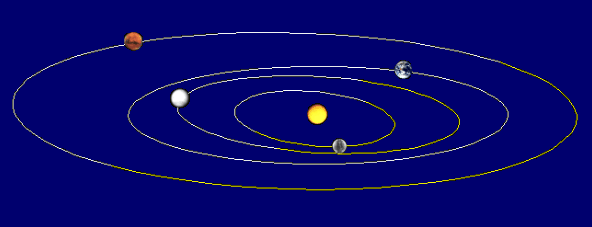 |
| Side view of the inner Solar System, Fall, 1996 |
In this figure the white portion of the orbit is above the ecliptic plane and the yellow portion is below. Notice that the orbits of the inner planets are nearly, but not quite, in the same plane. The orbit of Mercury, in addition to being the most eccentric of the inner planets, has the largest tilt of the inner planets (7 degrees) with respect to the ecliptic plane. Overall however, pluto (in the outer planets) has a higher eccentricity and tilt of 17 degrees of its orbit with respect to the ecliptic.
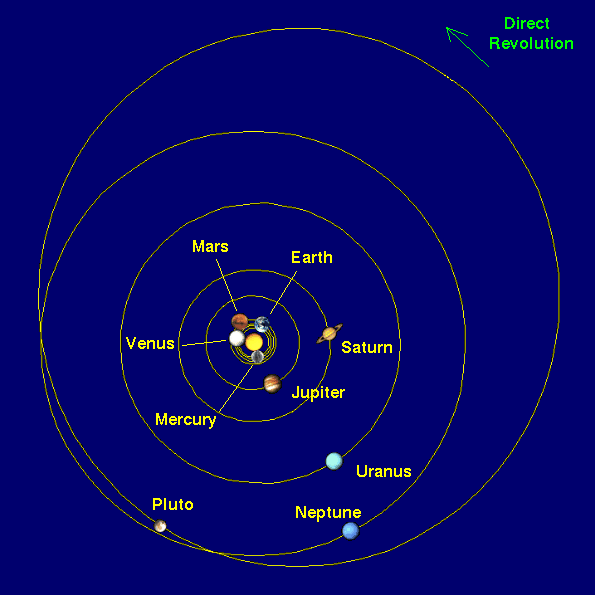 |
| The Entire Solar System to scale, Fall, 1996 |
Notice the enormous amount of empty space in the outer Solar System. To show the entire Solar System to scale, the inner Solar System becomes so compressed that the planet orbits almost appear to run together. The large eccentricity of Pluto's orbit is also evident.
Here are the present positions (top view, to scale) of all planets in the Solar System. As above, the portion of orbit in blue is above the plane of the ecliptic; portion in green is below the plane of the ecliptic.
The following figure shows the full Solar System to scale from a side view to illustrate the tilt of the orbits.
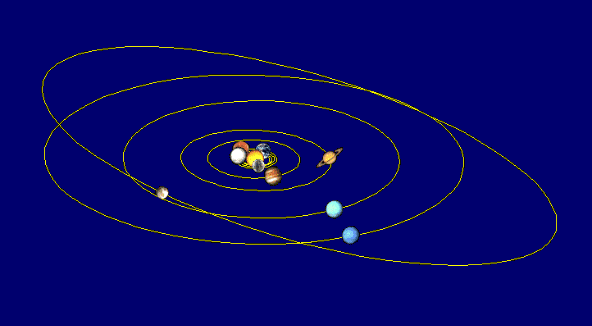 |
| Side view of entire Solar System, Fall, 1996 |
Notice that Pluto's orbit is highly tilted (17 degrees) relative to the plane of the ecliptic.
Here is the present position (side view, to scale) of all planets in the Solar System. The portion of the orbit in blue is above the plane of the ecliptic; portion in green is below the plane of the ecliptic. View is from 20 degrees above ecliptic plane to emphasize the tilt of orbits.
Here is the average separation of the planets from the Sun (in astronomical units) displayed in graphical form,
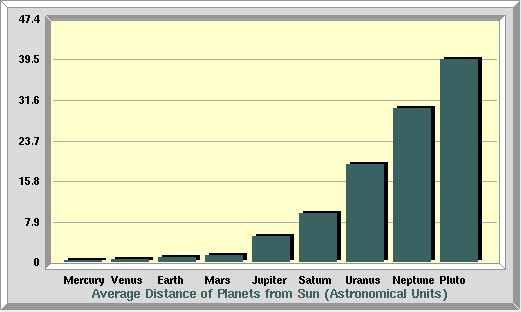
and here are the eccentricities of the planetary orbits
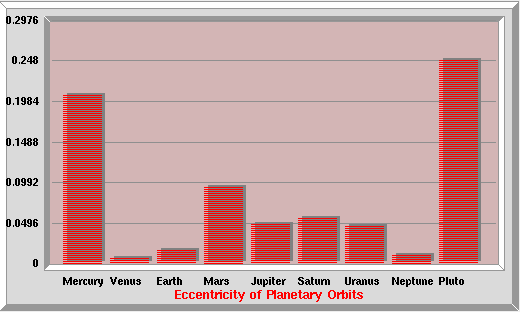
These two graphs display clearly the enormous distances in the outer Solar System, and that Pluto and Mercury have by far the most elliptical orbits.